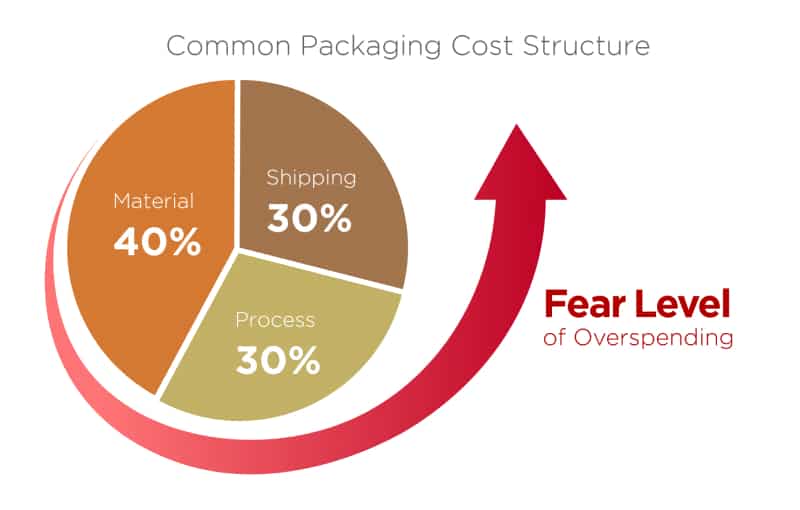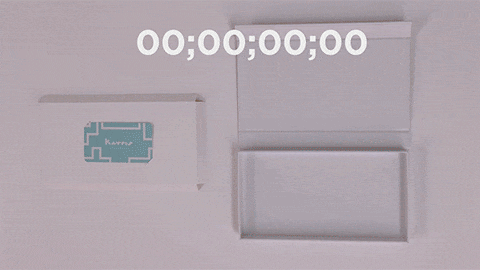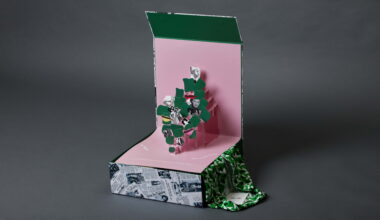Implementing this creative vision can quickly become a time consuming chore when negotiating with suppliers tied to cookie-cutter notions of packaging. Let’s have a look at how to keep packaging costs low while achieving creative goals.
1. Define Your Cost Structure

When defining a new supply chain, we all fear overspending. Even when a final cost is affordable, is the right amount going to material, production, shipping, and design?
There are many approaches to cost concerns. First and foremost, never wait for better prices to come to you. Start by setting a strict budget for each portion of the packaging process. Then assign the quality materials and suppliers within this budget. An in-depth budget establishes structure to information from suppliers, gives context for packaging costs over time, and is a great tool when establishing a new packaging line.
One common spend structure is the 40/30/30. Using 40% of the budget for materials, 30% for process costs and 30% for shipping. When reducing spending, separated costs keep realistic understanding on compromises, which might be required.
2. Analyzing Individual Spends
Material Costs
Materials share the exclusivity of your brand or protect delicate items when shipping. A contextual approach to material spending, considers:
- How will consumers see my brand through my packaging?
- Does my product require protection for safe shipping?
- Will manuals or printed inserts engage consumers in my brand?
- How well are the products presented when customers receive them?
Process Costs
Specialty printing, package assembly, and kitting costs can add up. These questions help you find valuable spending opportunities:
- Are full color prints the best way to share my brand story?
- Do specialty print finishes elevate my brand?
- Is the packaging assembly time being put to good use?
- Can the kitting process be simplified?
Shipping Costs
Shipping costs are ever present and efficient supply chains are especially helpful when shipping costs fluctuate. It’s important to think:
- Are there consolidation opportunities for raw materials?
- Are both packaging and product being shipped before kitting?
- How is the packed product being shipped to the distributor?
- What is the most effective distributor location?
3. Reduce Costs Individually
Reducing Material Spend
Always keep packaging minimal and simple. When faced with equally effective materials push for the lower cost selection. Quality structural design always looks for material efficiencies. If you have a longstanding packaging need, purchase in bulk.
Case Study: Retail Box | Art Paper
In 2016 our client reported a $500,000 spend on retail boxes. They were still growing and needed to save money in packaging. Zenpack created a full-scope analysis of the current paper market and purchased the art paper materials in bulk. In January 2017, materials were delivered for the entire year. This advanced ordering saved our client almost $15,000 in 2017 alone!

Data Analysis:
Retail box art paper weight = 0.0003 metric ton / per piece 2017 January Art Paper Price = 5820 RMB / per metric ton 2017 February ~ December average Art Paper Price = 6894 RMB / per metric ton
This is what our client would have paid if they purchased raw materials monthly:

Zenpack acquired materials at a fixed price 2017 in January:

620,400 RMB – 523,800 RMB = 96,600 RMB(14,587 USD) (Cost Saving for year 2017)
Defining Effective Processes
Consider the volume of your order before selecting printing methods and varnishes. With higher quantity inefficiencies will be more and more impactful. Kitting is a large portion of process costs, as it includes assembly of the box itself as well as packing. Using similar but simpler packaging structures saves everyone time and money.
Ineffective Box Structure for Kitting
(Book Style Folding Carton)

Kitting Time ≈ 25 Seconds
Efficienct Box Structure for Kitting
(Book Style Rigid Box)

Kitting Time ≈ 7 Seconds
The Smallest Shipment
ISTA safety tests are good tools to analyze shipping costs. ISTA testing can pinpoint opportunities to reduce packaging material, improving both volume and weight. Another consideration with shipping is optimizing shippers, pallets and containers. Planning logistics ahead often reduces freight costs. Always be ready to move to more cost-effective solutions. Zenpack put in place advanced packaging logistics solutions to address those issues.
Case Study: Pallet Loading Optimization
One of Zenpack’s clients found themselves shipping 3 containers from China to the United States monthly. Shipping costs were slowly overwhelming their budget. We helped them analyze their shipping containers. We found opportunities to reduce the size of their boxes and shippers, and fit more products onto each pallet. The increased products shipped in each container is saving them approximately $5000 per month!

4. Examine Your Bottom Line
Product premium packaging solutions is where art meets engineering. You must protect your product while also showcasing your brand. Helpful hints for the packaging process:
- Plan your packaging while designing your product.
- Buy in bulk whenever possible.
- Shop laterally to find high-quality materials at affordable prices.
——
We love to share our knowledge on the different aspects of packaging. If you are designing your product and packaging or want to reduce your overall costs, call or email us!
TEL: +1-408-321-8869
EMAIL: hello@zenpack.us
If you want to know more about Zenpack’s services
Let our packaging consultants help you turn your idea into reality.


